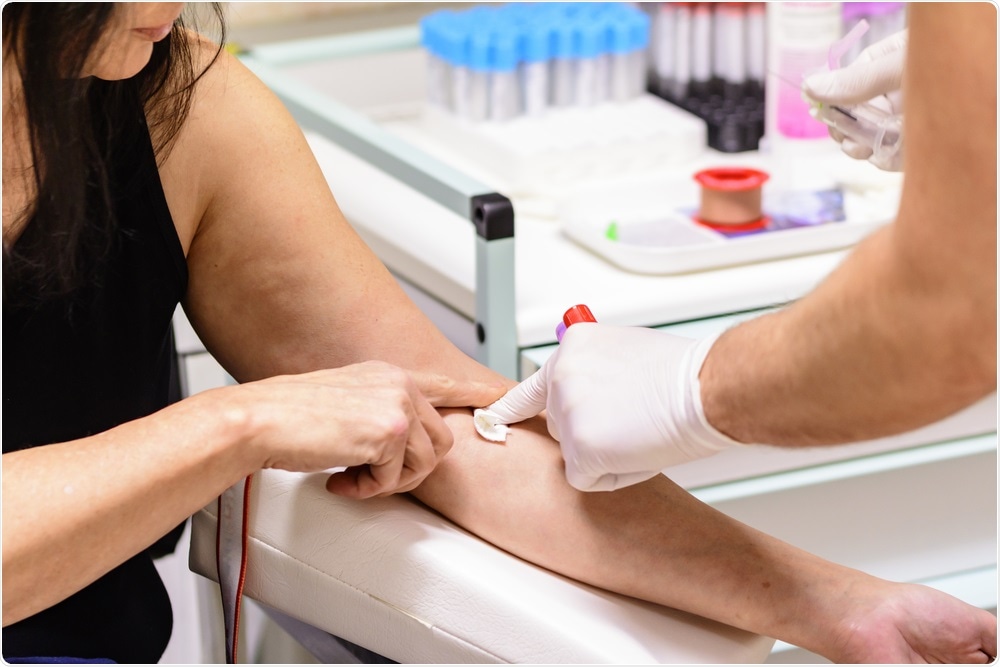Researchers in the United States have demonstrated that a new blood test could be a superior marker of the time to menopause than bleeding patterns, or previously available tests.

Image Credit: Ronald Rampsch/Shutterstock.com
The results of a longitudinal prospective cohort study showed that a refined version of the anti-Müllerian hormone (AMH) test made it possible to narrow the window of time to a woman’s final menstrual period within one-to-two years.
Using bleeding patterns or previously available tests to predict the time to menopause can only help us narrow the window to a four-year period, which is not clinically useful…Women can make better medical decisions with the more complete information offered by new, more sensitive anti-Müllerian hormone measurements,"
Nanette Santoro, University of Colorado Medical School in Aurora.
When can women expect menopause to start?
Menopause is usually diagnosed once a woman has not experienced a period for one whole year. According to the Mayo Clinic, this usually happens at around age 51 in the United States. However, menopause can start at any time during the 40s and 50s and currently, no test can accurately predict when this will happen.
Before a woman begins the menopause, she experiences a transitional period called perimenopause, which is characterized by hormonal and bodily changes such as irregular menstrual cycles and shorter periods. This phase can last for four-to-eight years and ends one year after the final menstrual period.
About AMH
AMH is a hormone involved in the development of reproductive organs in both sexes during the embryonic period. Women are born with their lifetime supply of eggs, which diminishes as she ages and approaches menopause.
In women, AMH is produced in the ovary by granulosa cells of the antral follicles and then released into the follicular fluid and blood vessels. In clinical practice, peripheral blood samples are used to measure AMH, which serves as an indicator of how many eggs a woman has remaining and seems to be a very stable marker in the assessment of ovarian reserve.
To date, the main clinical applications of this test have been the assessment of ovarian reserve in cases of infertility, premature ovarian failure, and hypogonadotropic hypogonadism. The AMH test may also be a valuable predictive marker of when menopause may occur.
"Establishing a way to measure time to the final menstrual period has long been the holy grail of menopause research," says Santoro.
For women who are trying to decide whether it is safe to have surgery for fibroids or to stop using birth control, an AMH measurement can provide useful information about the likely timing of menopause, adds Santoro. However, the test has not yet been able to detect the particularly low levels of AMH that occur in the one or two years leading up to menopause.
What did the current study involve?
Researchers analyzed blood tests taken from 1,537 women (aged 42 to 63 years) who participated in a prospective longitudinal cohort study as part of the Study of Women's Health Across the Nation (SWAN).
The SWAN is a multi-site longitudinal, epidemiologic study monitoring the health of women in their middle years as they go through the physical, biological, psychological and social changes that occur during the menopausal transition. All participants had their levels of AMH measured, along with and another reproductive hormone called follicle-stimulating hormone.
However, this time, the team used a more sensitive version of the AMH test than has previously been available.
As reported in the Endocrine Society's Journal of Clinical Endocrinology & Metabolism, the use of this more sensitive test made it possible to predict the timing of a final menstrual period within one-to-two years of it happening among women in their late 40s and early 50s.
Researchers have long thought AMH would be a superior marker of the time to menopause, but tests haven't been sensitive enough to detect the very, very low levels that occur in the year or two leading up to menopause,"
Joel Finkelstein, Massachusetts General Hospital in Boston.
"It took a cohort like the Study of Women's Health Across the Nation (SWAN), which followed the same women year after year from well before menopause until well after, to get the kind of data necessary to be able to demonstrate the predictive value of AMH,” concludes Finkelstein.
Sources:
Blood tests can predict the timing of the final menstrual period. EurekAlert! 2020. Available at:https://www.eurekalert.org/emb_releases/2020-01/tes-btc011620.php
Menopause 101: A primer for the perimenopausal. NAMS. Menopause.org Available at:https://www.menopause.org/for-women/menopauseflashes/menopause-symptoms-and-treatments/menopause-101-a-primer-for-the-perimenopausal
What’s the Average Age of Menopause? Plus What to Expect When It Starts. Healthline.com. Available at: https://www.healthline.com/health/menopause/menopause-age
Journal reference:
Kruszyńsk A and Słowińska-Srzednicka J. Anti-Müllerian hormone (AMH) as a good predictor of time of menopause. Prz Menopauzalny 2017;16(2):47–50. DOI:10.5114/pm.2017.68591